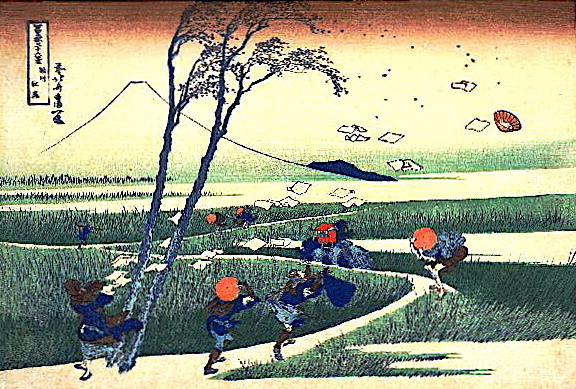This is the third post considering the implementation of Dylan Wiliam’s ideas on formative assessment in EFL classrooms in Japan. The ideas were gleaned from his wonderful 2011 book titled Embedded Formative Assessment. The first post in this series looked at learning intentions. The second looked at eliciting evidence of achievement. This post will consider how and when teachers can best provide feedback to learners. This part of the book takes up the theoretical rationale for giving feedback.
Let’s start with a question: is a grade feedback? That is, is it information–meaningful, understandable, actionable information–that contributes to the learning process? Mr. Wiliam says usually it is not. In the language of assessment, there is summative assessment and formative assessment. And grades are not formative assessment. And in Mr. Wiliam’s view, formative assessment is really all that matters.
If we think carefully about it, and Mr. Wiliam has, we can see that there are four possible responses to feedback: the learner can change his behavior (make more or less effort); the learner can change his goal (either increase or reduce his aspiration); the learner can abandon his goal altogether (decide that it is too hard or too easy); or the learner can just reject or ignore the feedback. As teachers, we know which of these actions we want learners to take, but what the learner actually does depends on how he sees the goal, the feedback, the feedback giver, and a host of other factors. Feedback seems straightforward in the teaching/learning culture we grew up with. But it is not. In fact, getting it right is really hard. But before we even try to get it right, a more fundamental mindset change is necessary. We have to understand that much of the “feedback-giving” we have traditionally done as teachers has been a waste of time–our time mostly–and has not contributed to learning. Much of or the “feedback-giving” we thought was so important, turns out to either have negligible effect or even negative effect. Yup, negative.
Feedback needs to “cause a cognitive rather than emotional reaction in learners”. It must “make learners think”, and it is only effective “if the information fed back to the learner is used by the learner in improving performance.” And this is why just giving grades is problematic. Students first look at their grades, then they look at the grades of other students, and they generally don’t even read those elaborate comments you spent all that time writing. Providing good feedback is difficult. It requires breaking down each learning intention into micro-skills, or micro-concepts, or significant units, and then being able to identify exactly what the learner is not doing right and how he can improve. The timing is also important. Performance must be fresh in a learner’s mind and there must be time to make use of that feedback on subsequent performance. The amount is important. It must be focused enough to be understandable and actionable. And learners need to believe they have the power to make changes that lead to improvement. They have to trust the teacher and believe in themselves. These are not givens. Teacher praise of effort (see Carol Dweck, who Mr. Wiliam cites often in this chapter) affects this, but so do task perception and the social atmosphere of the classroom.
For language classes with their combination of knowledge learning and skill building, this is a challenge that will require at least two distinct approaches. For skill building, the teacher must act more like a coach. Speaking, writing, listening, and reading must be broken down into micro-skills and learners need to be given feedback on each one so that they and the teacher get a picture of how they are doing and what they need to improve. Let’s take listening as an example. Mr. Wiliam suggests a chart of micro-skills based on the rubric of learning intentions for the course and a score of 0, 1, or 2 for each. 0 means no evidence of mastery; 1 means some evidence of mastery; and 2 means strong evidence of mastery. Both the learner and the teacher get a good idea of what is being done well and not so well, and the rubric (provided earlier) clearly states the conditions of mastery performance. The teacher can then concentrate on giving advice for improving performance. Let’s say the micro-skills include genre identification, understanding reduced speech, identifying transition signals, or keeping up with native speed levels. The teacher has ways of checking all of these and knows ways of improving each of them.
For productive skills like conversation skills or presentation skills, the same can be done. In addition, video can be used to give feedback and provide a marker against which future performance can be judged (though Mr. Wiliam doesn’t specifically suggest this in the book). I tried this back in the day of VHS analog video and it worked really well, though it was very difficult to get learners to watch critically and reflect on their performance and think about how to improve it. The original idea came out of work done at Nanzan University in the 1990s by Tim Murphey, Linda Woo, and Tom Kenny (here is a later article explaining how it is done). Recently, with digital video and with every student sporting a smartphone or a tablet, this can be done much more easily. Techsmith has a brilliant app available for exactly this purpose, called Coach’s Eye. It allows you shoot and annotate a video and then share it.
For any kind of written work (translations, example sentences, paragraphs, essays, culture notes, etc., something Mr. Wiliam suggests is providing feedback without the grade. This can be done individually or in groups. For groups of four, for example, essay comments can be handed out separately on four sheets of paper. The four corresponding essays are also handed out and the learners in the group must work to match the comments to the paper. This forces them to consider the comments and it gives them a way to compare their performance on specific criteria against that of others. After that–and this is a critical step–the learners are given a chance to make adjustments to their papers and resubmit them for actual grading.
Mr. Wiliam quotes Alfie Kohn in the chapter: “never grade a student while they are still learning.” This is good advice. It can help a teacher to get into the best mindset to move learning along. Mr. Wiliam provides a strong case for doing this. The differences in learning outcomes between classes that employ formative assessment and those that do not are stunning. Teachers should be coaches, encouraging, developing, and training essential skills for performance. Formative assessment is the key, I believe, to getting teachers to assume a more effective role in the classroom and to building a community of learning. More on that last point when we look at what Mr. William has to say about leveraging peer feedback in the next post.
Next: Part 4, Getting other learners involved.













